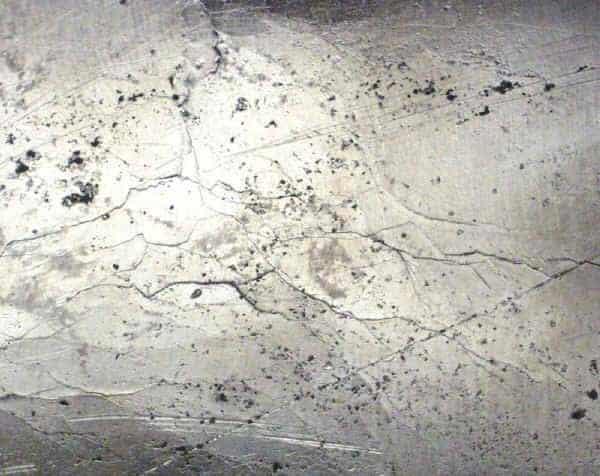What is Mild Steel?
Carbon steel is sometimes referred to as ‘mild steel’ or ‘plain carbon steel’. The American Iron and Steel Institute defines a carbon steel as having no more than 2 % carbon and no other appreciable alloying element. Carbon steel makes up the largest part of steel production and is used in a vast range of applications.
Typically carbon steels are stiff and strong. They also exhibit ferromagnetic tendencies (i.e. they are magnetic). This means they are extensively used in motors and electrical appliances. Welding carbon steels with a carbon content greater than 0.3 % requires that special precautions be taken. However, welding carbon steel presents far fewer problems than welding stainless steels. The corrosion resistance of carbon steels is poor (i.e. they rust) and so they should not be used in a corrosive environment unless some form of protective coating is used.
Advantages of Mild Steel
Disdvantages of Mild Steel
What is Stainless Steel?
Stainless steel is defined as a steel alloy with a minimum of 11.5 wt% chromium content. Stainless steel does not stain, corrode or rust as easily as ordinary steel (it “stains less”), but it is not stain-proof. It is also called corrosion resistant steel when the alloy type and grade are not detailed, particularly in the aviation industry. There are different grades and surface finishes of stainless steel to suit the environment to which the material will be subjected in its lifetime. Common uses of stainless steel are cutlery and watch straps.
Stainless steel differs from carbon steel by amount of chromium present. Carbon steel rusts when exposed to air and moisture. This iron oxide film is active and accelerates corrosion by forming more iron oxide. Stainless steels have sufficient amount of chromium present so that a passive film of chromium oxide forms which prevents further corrosion.
Here are some comments from purchasers and users of various wood stoves and from people in the metal and welding industry.
Stainless steel is not corrosion proof but it is corrosion resistant. In some cases, against some chemicals, stainless steel is no better than plain steel. It is also true that some chemicals can reportedly leach the chrome out of stainless steel (if there is any – in that grade of stainless).
We own a stainless model and after 5 years the 10 year warranty was a joke just try to collect. its a discarded junk heap is it the stainless I have been welding lots of steel stoves for pitting but never seen one crack .
High nickel stainless expands and contracts too much.Carbon steel will transfer the heat better than stainless though.
Hope this helps
Just to set the record straight on stainless steel, it doesn’t work in an outdoor use. It can’t account for the rapid temperature changes. I am only starting to get into the heating business and I already know that stainless steel is a nice concept but when you have a cracked water jacket and there is know way to fix it, don’t come crying to me. Also I love reading about all these companies with there lifetime warranties who have only been in the business for 3-5 years, give me a break. As soon as one claim comes in they go bankrupt and your on your own once again. Mild steel is a metal that works and if you have half a brain to take proper care and daily maintenance of your furnace it will last you. Thanks for your time.
Definitely go with the mild steel when you buy an outdoor wood furnace. I’ve seen both in use and the mild steel will not have the corrosion problems that the stainless steel has. I currently own a (wood furnace) with mild steel and I can give my testimony that it has worked perfectly and has needed no maintenance or upkeep for any type of problems. I don’t speak from a “metallurgy” knowledge, but from practical experience that has done me well.
I HAVE SEEN MILD STEEL UNITS, SIXTEEN YEARS OLD. UNDERSTANDING THE PHYSICS OF WHAT CAUSES CORROSION IN THESE TYPES OF METAL IS KEY. WATER ABOVE 175 DEGREES DOES NOT HAVE AVAILABLE OX. FOR CORROSION. MOST OF THESE UNITS RUN AT 180 – 185 DEGREES. 304 STAINLESS IS EXTREMELY PRONE TO STRESS CORROSION CRACKING – WHICH RESULTS FROM CHLORIDES IN THE WATER REACTING WITH THE NICKEL CONTENT OF THE STEEL. THIS IS NON-REPAIRABLE BY WELDING. 409 STAINLESS WILL GIVE YOU THE HEAT TRANSFER ABILITIES AND EXPANSION PROPERTIES OF MILD STEEL, IT IS A FERRITIC STAINLESS, SO THE SURFACE WILL TARNISH. THE CORROSION RESISTANCE IS STILL GREATER THAN MILD STEEL. … KEEP IT SIMPLE.
NOTE from Wood Heating Solutions: ALL stainless steel gets stress cracks and because it is so expensive, it is made very thin and so all of the cracks eventually go all the way through and soon you have a pile of scrap metal.
Hopefully we have made it clear that in the mild steel vs stainless steel debate for wood furnaces, mild steel wins period!

